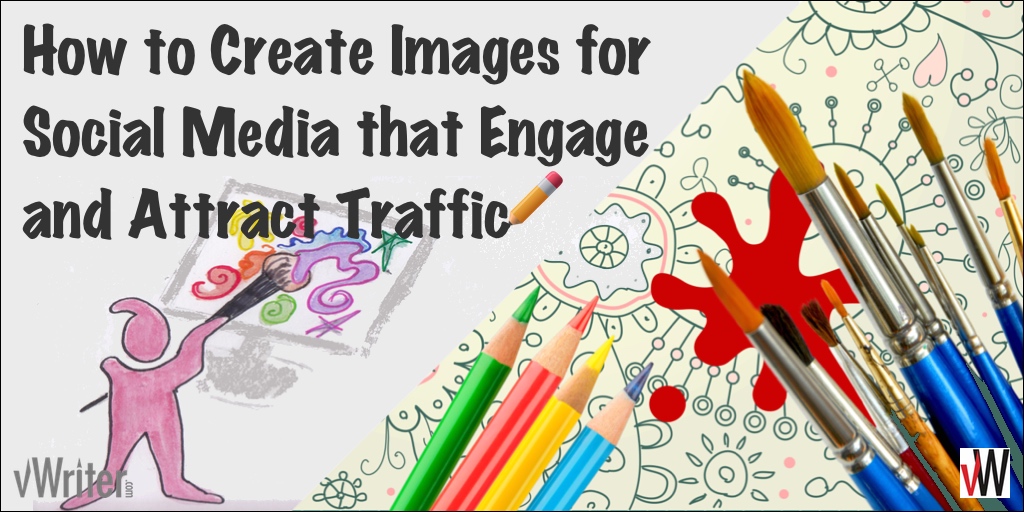Social media platforms are very visual places. Posts that contain text alone are likely to get drowned out by those using various types of imagery. They attract far more attention and are easier to consume. With social media users often scanning through hundreds of posts or tweets at a time, you literally have micro-seconds to attract someone’s attention. To do this, images are key.
However, once you’ve created an image, there’s no reason why it can’t be used across different social networks. For example, the same image you post to Facebook when posting about your new blog post, can be just as easily pinned to Pinterest, tweeted to Twitter, and so on.
Even better, why not just start with a Featured Image for your blog post? Then just use the same one when posting your blog post to social media.
This is the approach I always take, the one I highlight in my Be Everywhere Blueprint, and will be the approach I focus on here. Start with your blog. Repurpose, reuse, and adapt as necessary elsewhere.
So … how should you go about creating these social media images that engage and attract traffic?
There are a number of ways to approach it, and I’ll go through some of these options.
 Post a Photo
Post a Photo
This is a basic approach where you just search for a suitable photo from one of these stock photo sites (the list includes both free and payment-based options). Generally you will look for a photo that bears some relation to the topic you are posting about.

Use an image that bears some relation to the content you are sharing
For example, an image I used for a blog post about sending out a regular newsletter featured a dog with a newspaper in its mouth (as reproduced here).
An additional advantage of this type of image is that animals tend to boost engagement on social media, as do photos of attractive women (for both sexes), babies and small children.
For example, I recently ran some ads on Facebook, testing a photo of a male versus a photo of a female. The latter attracted considerably more click-through and engagement, and by some multiple, regardless of the sex of the person clicking through.
But, for organic posts that will stay on your time line, you do need to be careful in your selection of an appropriate image.
For example, for a post about the latest tax changes from an accountancy practice that you then share on social media, an image of a beautiful woman or doleful dog for no obvious reason, would seem gratuitous, confusing, and likely lose you credibility and authority.
 Purpose-Built Image Tools
Purpose-Built Image Tools
There are various tools around online specifically designed for the easy creation of social media images, images for blog posts, and so on.
The one I have most experience with is Canva. It has lots of different images, photos, and layouts available, and you can upload your own images too.
To create a new image, you select from a number of pre-existing options containing the correct dimensions for your purpose. Or you can enter in your own custom dimensions.
You then select from the range of backgrounds, shapes, images and photos it has available to create your image.
What I would strongly recommend is to add the title of your post into the image:
- This helps the image stand out and get attention on social media. It’s immediately obvious what it relates to, it’s easy to consume, and helps attract your target market to the information you are sharing …
- It helps prevent the image being stolen or used without authorization …
- When your image shows up on Google Image Search, it once again attracts the attention of potential prospects for your market.
For these reasons, I normally add vWriter.com’s logo and domain into the image as well to help attract further click-through to the site.
Canva is specifically designed to make it really easy to add your text into the image. You simply drag a text option across, edit the text and adjust the font and size as required.
You can also add other images such as your own logo using Canva as well.
When it comes to downloading your Canva creation, you pay $1 per paid graphic that you’ve used from them (eg. background, photo, other images and graphics) and incorporated into your image. However, many graphics they provide are free, you can upload your own, and any you do pay for are high quality and fit for purpose.
Apart from Canva, there are other options available to create social media images, such as PicMonkey.
For more fine-tuned image editing and general image creation, I use Pixelmator (designed for the Mac, with versions for the iPad and iPhone too). There’s also a great little free online-based image editor available called Pixlr.
 Go Non-Digital
Go Non-Digital
You are not restricted to using computer or online-based software for creating your social media images. if you have artistic skills, know someone who does, or have an employee with perhaps untapped artistic potential, try creating an image based on real world, non-digital art.
This has been part of my approach for a few weeks now. I use both offline, non-digital art and digital imagery in combination.
My wife creates some art work based on the nature of the blog post I’m creating, scans it in and sends it to me. I then add some digital touches for a kind of ‘hybrid’ effect that can be highly effective and stands out from the crowd, simply because it’s different.
But it doesn’t have to be hand-drawn or ‘doodle’ type art. You could use for example your own photography, create an offline collage that you scan in, or even scan in some cross stitch. Be creative, and add your own individuality!
——–
The important point is to find what works for you in creating your own social media images. The more times you create such images, the more you will notice the type of image that engages your audience’s attention, helps you stand out from the crowd, and gets the best results.




